Arming
Engagement
Descent ( DES)
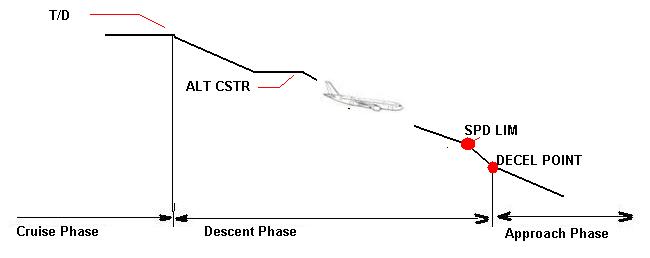
The Descent (DES) mode is used to transition the aircraft from the the cruise altitude to the deceleration point at approach.
The Descent Mode guides the aircraft down from the cruise altitude to the approach along a pre determined descent path
The Descent path takes account of speed limits, altitude constraints and any inserted holding patterns
The Descent mode is armed when :
FCU Altitude is lower than the current aircrafts altitude
NAV mode is engaged
Take off or Go around phase is not active
A decent profile exists within the MCDU
The Descent mode is disarmed if any of the following occur
FCU Altitude is set above the current aircraft’s altitude
NAV mode is lost or de-
Go around phase becomes active
Loss of a valid vertical path
Engagement of another vertical mode
The Descent mode is engaged when :
The aircraft sequences the Top Of Descent waypoint (T/D)
The sequencing of an Altitude constraint within the descent profile
The Descent mode is disengaged if any of the conditions that would disarm the DES mode occur.
Descent Initiation
The following actions by the flight crew are required to initiate a managed descent :
Select an altitude ( usually the ATC clearance altitude) on the FCU
Push in the ALT knob on the FCU
If the aircraft has not reached the T/D waypoint and is within 200 NM of the destination,
the DES mode guides the aircraft at -
If the aircraft is beyond the T/D waypoint the DES mode guides the aircraft at the descent target speed, with the engines thrust at idle.
During the descent the A/P vertical mode operates a speed on elevator control law as the A/T reduces the thrust to idle. This will result in a glide path that should match the decent profile path.
If the VDEV becomes to great, and shows the aircraft below the decent profile path,
the A/P will change mode to a V/S type mode and maintain -
In these cases, the path intercept symbol may appear. The decent phase ends when flying over the (DECEL) waypoint.
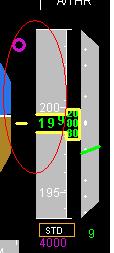
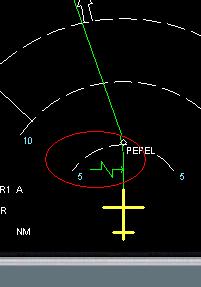
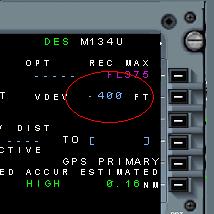
Monitoring the descent
During the descent monitor the VDEV displayed on the PFD and the value displayed on the progress page
On the descent path profile
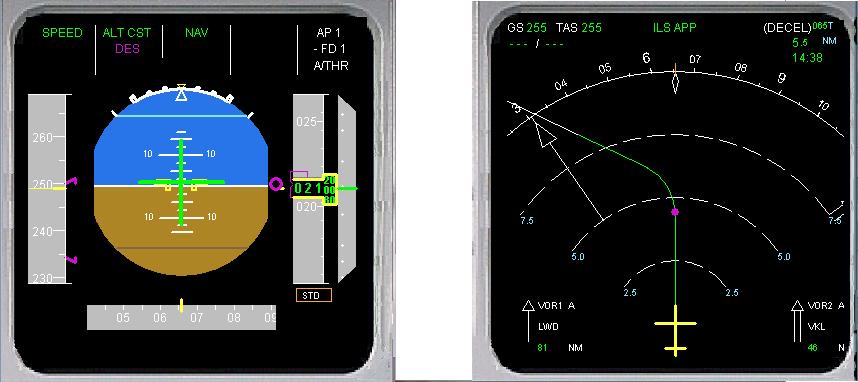
The aircraft is considered to be on the decent profile if it is within 50 ft of that profile. In this case the FMGS predicts that it will meet all the altitude constraints within the decent path. The 1st column of the FMA may show SPEED or THR IDLE
Above the descent path profile
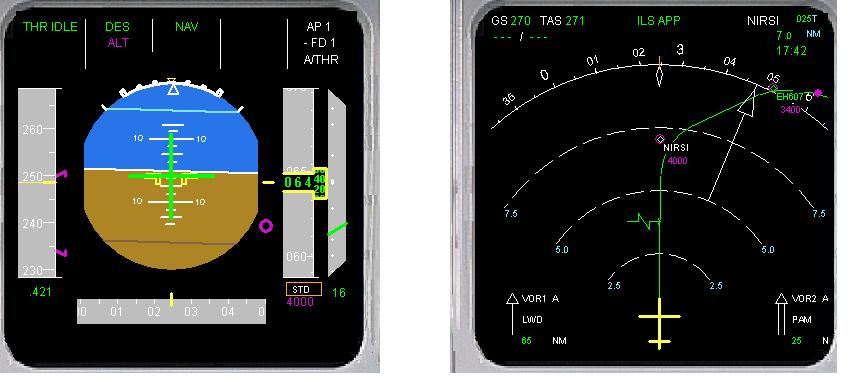
The VDEV will be shown at the bottom of the altitude tape on the PFD and the VDEV value will be positive on the progress page. The FMGS will slowly increase the target speed. To cause a steeper descent path. However, when the target speed reaches the upper speed limit there is no more that the FMGS can do and the aircraft will diverge from the decent profile path. In this case speed brakes would then be applied by the pilot.
Below the descent path profile
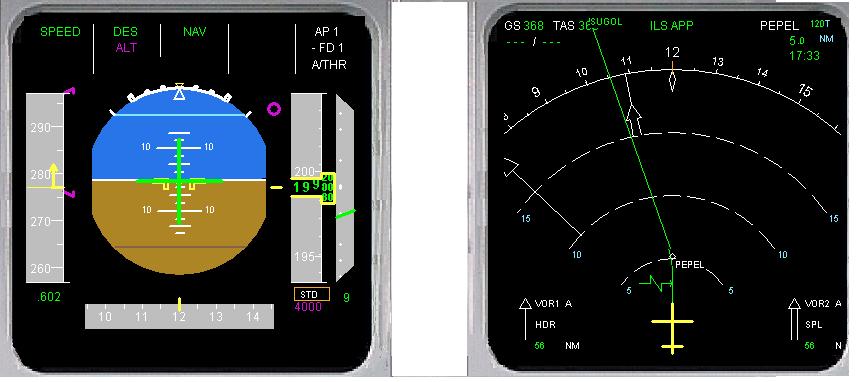
The FMGS at first commands a lower target speed to shallow the descent path. If this
does not bring the aircraft back t the descent profile the FMGS engages the A/T in
speed and then commands a -
Holding patterns
When the aircraft enters a hold pattern, the DES mode commands -
